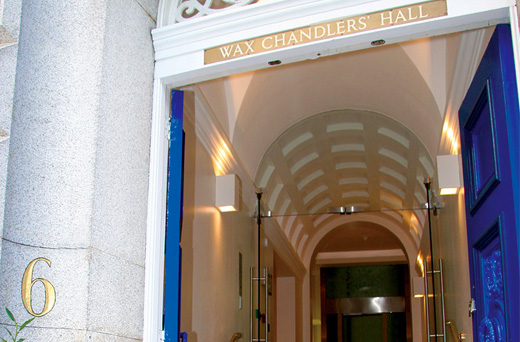Apis mellifera or the western honeybee as she is more commonly known, has been revered for thousands of years for her ability to make a sweet substance that delights the human palate. The earliest record of humans’ use of honey is a cave painting in Valencia, Spain, depicting a man climbing a cliff to rob a swarm of wild bees. It dates back at least 10,000 years and the love affair continues today.
Most people, however, know little about the honeybee’s importance as nature’s master pollinator. Pollination is essential for flowering plants that not only provide the world with so much of its vitality and colour but also one third of the average diet: from soya beans, onions, blueberries, cranberries, strawberries, melons, avocados and peaches to cattle feed. Nearly £200 million of fruit and vegetable production in Britain relies on pollination by bees. In America, the sums are far larger: bees there pollinate $15 billion of agricultural output.
The Company formed a connection with the British Beekeepers – as the heirs to the original suppliers of beeswax – and the Master Wax Chandler was elected President ex-officio of the British Bee Keepers’ Association (BBKA) in 1907 and Patron of the Association in 1921. The Master later became ex-officio Patron of the Central Association of Beekeepers (CABK) in 1945 and the Honorary Patron of the National Honey Show in 1993, since when the Company has sponsored the event.
Honey
Honey is the complex substance made when the nectar and sweet deposits from plants and trees are gathered, modified and stored in the honeycomb by honey bees as a food source for the colony. All living species of Apis have had their honey gathered by indigenous peoples for consumption, though for commercial purposes only Apis mellifera and Apis cerana have been exploited to any degree. Honey is sometimes also gathered by humans from the nests of various stingless bees.
Pollination
Species of Apis are generalist floral visitors, and will pollinate a large variety of plants, but by no means all plants. Of all the honey bee species, only Apis mellifera has been used extensively for commercial pollination of crops and other plants. The value of these pollination services is commonly measured in the billions of dollars.
For those interested in encouraging bee activity in their gardens, a couple of hints:
- Plants growing in sunny, sheltered places are more likely to be visited by bees than those growing in shaded or windswept conditions.
- For keen gardeners
Annuals and biennials: Borage, buckwheat, Californian poppy, candytuft (Iberis), China aster, clarkia, cornflower, cosmos, forget-me-not, French honeysuckle, godetia (Clarkia), heliotrope, single-flowered hollyhock, honesty, love-in-a-mist, mignonette, poached egg plant, sunflower, sweet sultan (Centaurea), wallflower, and zinnia. - For lazy gardeners
Weeds and wild flowers: Bindweed, birdsfoot trefoil, burdock,charlock, chickweed, clovers, coltsfoot, dandelion, devil’s bit scabious, field scabious, figworts, hemp agrimony, horseshoe vetch, knapweeds, knotgrasses, lesser celandine, mallows, marsh marigolds, meadow clary, meadowsweet, poppies, purple loosestrife, red deadnettle, rosebay willowherb, teasel, thistles, toadflax, traveller’s joy, valerian, viper’s bugloss, white bryony, white melilot, yellow melilot, and yellow trefoil. - If you are interested in knowing more detailed information about the honeybee, The Biology of the Honeybee by Mark L Winston, published by Harvard Press and available on amazon.co.uk, is recommended.




